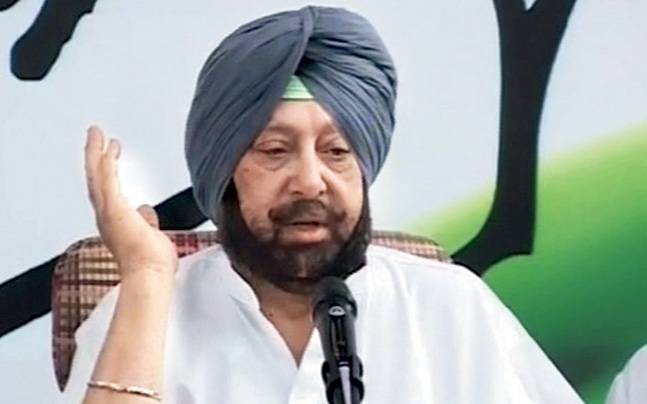
Chandigarh:The Punjab Cabinet today gave its approval to notify the crop loan waiver scheme announced by Chief Minister Amarinder Singh in the state Assembly in June this year.
The decison will directly benefit 10.25 lakh farmers, an official spokesperson said.
Apart from taking over the entire eligible loan amount of the farmers covered by the debt waiver scheme, the government has also decided to take over the outstanding interest due from April 1, 2017 till the date of notification, which will lead to an additional Rs 400 crore benefit to the farmers, he said.
The decisions were taken in a meeting of the state Cabinet, chaired by the chief minister, here today.
The much awaited announcement came amid opposition attacks over delay in implementation of the debt waiver promise and a number of suicides by farmers in the state.
Farm debt waiver was a key poll promise made by the Congress during the 2017 state polls.
The official spokesperson said that the entire amount would be defrayed to the banks in a phased manner, except for cooperative credit institutions.
The proposed notification will pave way for the state government to take up one-time settlement of these loans with respective banks, he said.
The crop loan waiver scheme is based on the recommendations of an expert group headed by eminent economist Dr T Haque.
The decision envisages that in case of marginal farmers (less than 2.5 acres) the entire eligible amount of those farmers who have a total outstanding crop loan liability upto Rs 2 lakh shall be provided as debt relief and in case of eligible amount being more than Rs 2 lakh, only Rs 2 lakh shall be provided as debt relief.
In case of small famers (from 2.5 acres to less than 5 acres), the entire eligible amount of those farmers who have total outstanding crop loan liability upto Rs 2 lakh, shall be provided as debt relief.
The debt waiver scheme would cover crop loan disbursed to farmers in the state by scheduled commercial banks, cooperative credit institutions (including urban cooperative banks and regional rural banks, collectively called as the ‘lending institutions’, the spokesperson said.
The scheme shall come into force from the date of its notification in the official gazette, he added.
In the case of a farmer who has taken loans from two separate lending institutions, the first priority shall be given to the cooperative institutions, second to public sector banks and third to commercial banks, in that order, he said.
The amount eligible for debt relief shall comprise of the outstanding liability under crop loan (principal and interest) as on March 31, 2017, according to the spokesperson.
The interest outstanding from April 1, 2017 till date of notification shall be additional. As per data collected from state level bankers committee, there are about 20.22 lakh bank accounts with an outstanding crop loan of Rs 59,621 crore as on March 31, 2017.
It is estimated that about 10.25 lakh farmers will be provided debt relief under this scheme. For this purpose, bank branch wise lists of eligible small and marginal farmers shall be prepared under the supervision of the deputy commissioner of the concerned district, the spokesperson said.
The funds shall be provided to the deputy commissioners and each farmer shall be issued a dept relief certificate by the concerned bank branch after crediting the relief amount in his account.
A district level bankers’ meeting will be convened by the deputy commissioner and district-wise details of loan waiver bank-wise, farmer-wise will be recorded and sent to director, agriculture, who will release the amount to the concerned deputy commissioner for settlement of accounts of eligible farmers, the spokesperson said.
To provide effective settlement of non-institutional loans, a Cabinet sub committee has also been constituted to review the Punjab Agriculture Debt Settlement Act 2016 to make settlement of debt cases more effective, the spokesperson said.
As per studies carried out by Punjab State Farmers’ Commission and Punjabi University, Patiala, the debt per household which was about Rs 1.79 lakh in 2005-06 had increased to Rs 4.74 lakh in 2014-15, the spokesperson said.


.jpeg)

